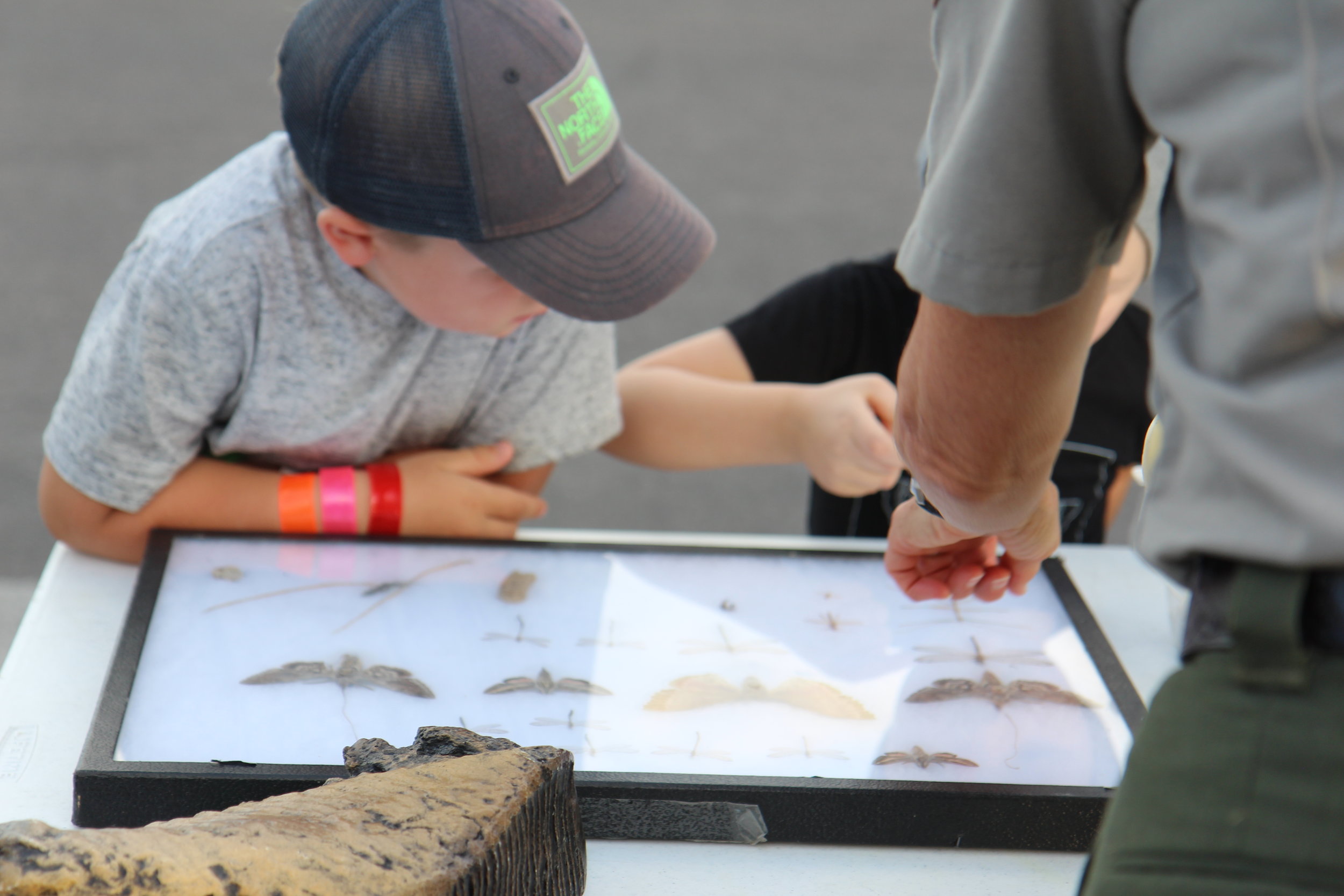We were extremely fortunate to be visiting White Sand National Monument on the same day as their annual MothaPalooza special event. This just happened to work out perfectly as Jaxon had two very short lesson plans that needed to be accomplished on moths. So this grand adventurous nighttime event was going to take the place of some mediocre crafting project that I would have had to most likely dig for on pinterest to accompany two books on moths. The first of the two studies was when we were directed to read the following book, What's the Difference Between a Butterfly and a Moth?, after studying Butterflies to be able to understand the difference between them.
Upon our arrival we were met in the parking lot by an array of educational tables set up for the children to explore. Each table was fully equipped with different topics all relating to the wildlife at the National Monument.
The most exciting event for myself as a home educator was the table that related to second book that we had to read in order to learn about moths, Night Life of the Yucca, The story of a flower and a moth. Not only were we able to read about this amazing phenomena, we were given the great opportunity to witness the process first hand. At the Yucca Plant table they had placed a paper, basically a review for us after reading this book, but it explained the unique relationship between the Yucca Plant and the Yucca Moth. How without each other neither would exist in this world. The beautiful symbiotic relationship that they have reminds us how so many living things depend upon one another.
Of course Jaxon loved that they were breaking open some of the pods from the Yucca Plant so the children could see where the Yucca Moth larva was living and what they looked like.
Also on site for the preservation of another species of animals was an amazing man who saved bats for a living. Having him on location discussing the safety of bats gave everyone who attended the opportunity to see the bat up close in a rare vision of him holding and handling the bat seen below in the towel. Later that night he released a group of bats that he had rehabilitated ealier this year.
On this evening we had the distinguished pleasure of listening to a lecture by Eric Metzler. I remember when I attended college and there was always those hand full of teachers everyone fought to get into their courses because they made you want to learn, they challenged your mind in a way no one else had. I can imagine that Eric Metzler was that teacher. His passion for moths and all other living things left you wanting to learn more. This remarkable man came to White Sand National Monument to volunteer his time to study the moths of this area. In his time here he has unveiled many new species of Moths while learning so much more about existing species.
Following the bat release everyone was welcome to drive in their cars out to the Big Dunes Nature Trail for a moth sheeting event. A moth sheeting event is where black lights are placed to attract Moths to the sheets for viewing purposes only. I was so excited about this event for so many reasons. First when would you ever be able to see moths up close like this ever again. Second, when would I ever go walking in the desert sand dunes of New Mexico at night. The excitement as we exited our car, flashlights in hand was unbelievable.
As we made our way towards the first sheet we began seeing so many exciting insects. Below you can see a Darkling Beetle and a Walking Stick. We stopped and observed both these insects for sometime before moving onto new discoveries.
As we came to the second sheet we were able to observe our first moth with a whole new appreciation for these creatures we watched the beauty they hold as they sat under the light with total stillness.
As we approached the top of the dune we found yet another fluorescent light set up against a giant rock formation where we found another handful of giant moths along with some even more exciting creatures.
We had recently studied in depth about animal adaption. Yet I can honestly say I had never seen in such obvious the color adaption animals make to their environment until we came to white sands. The lizards, moths, frogs and many other creatures here have adapted to the color of the dunes and appear almost completely white as the sand. We stayed and watched the frog for a short period in awe of its color and transparency up against the sand dune.
We then heard all kinds of commotion to find that someone had found a scorpion. As Jaxon's interest took a running start across the dune to the gathering of park rangers all observing the scorpion hunt for its pray under the fluorescent light held by the rangers.
I do not know if I could ever attend an event that will hold as much excitement, knowledge, and great educators as I did that night. I will however hope and dream of returning another year to attend Mothapalooza. Next time it might even be the reason for our journey.


















